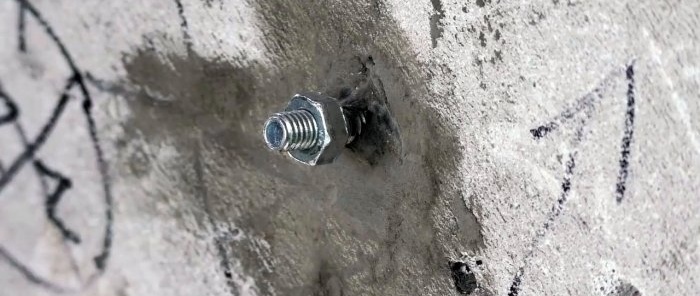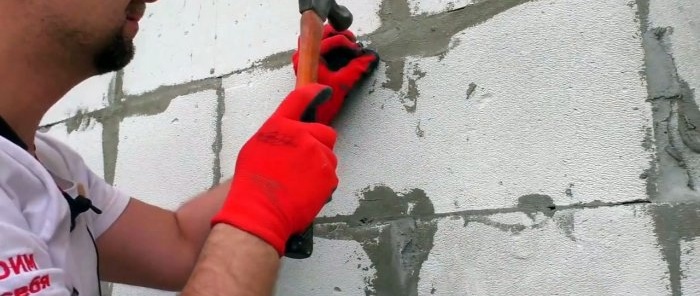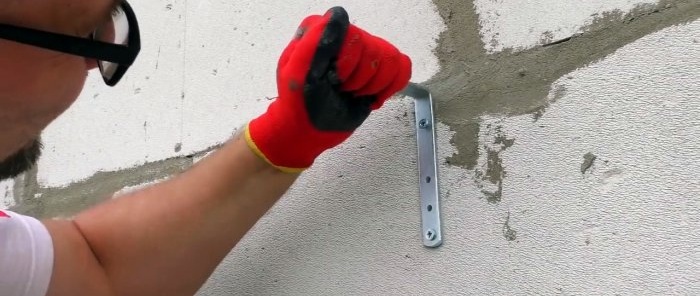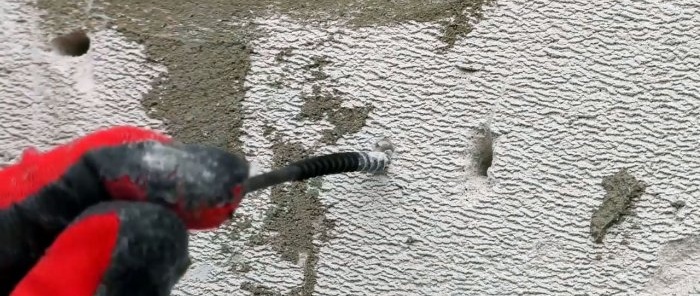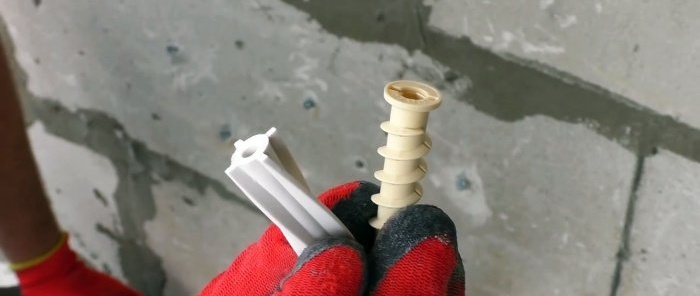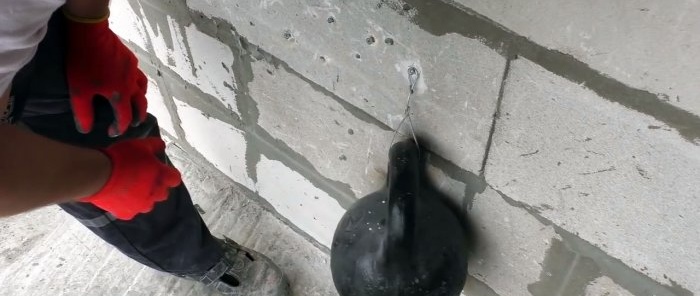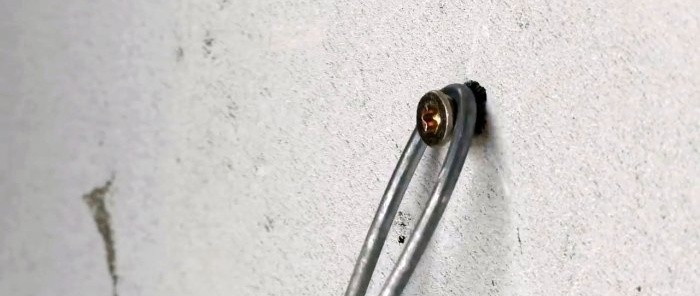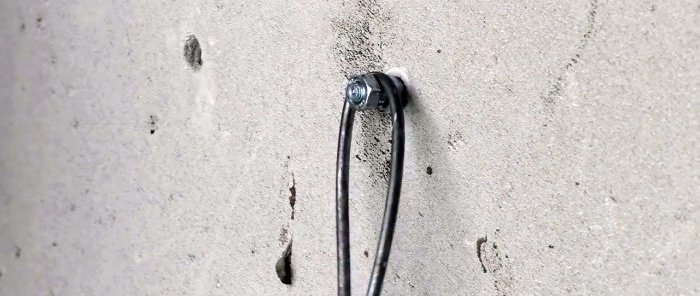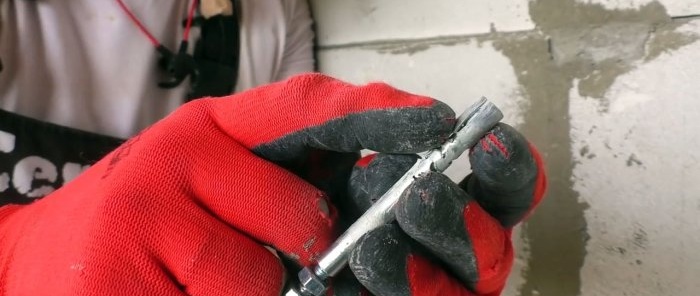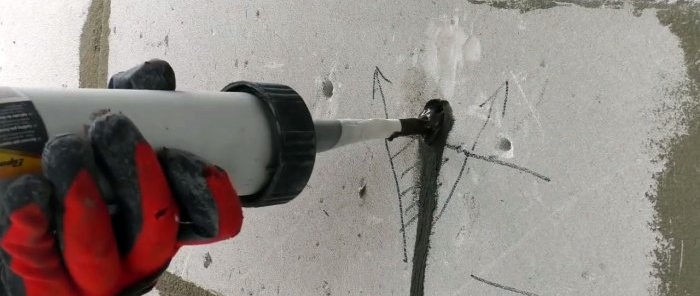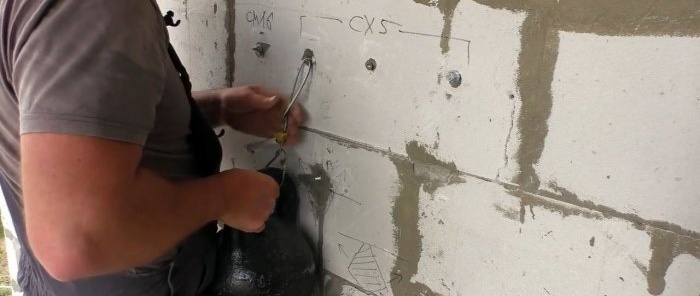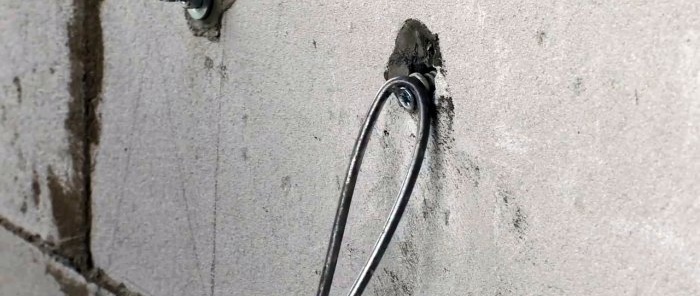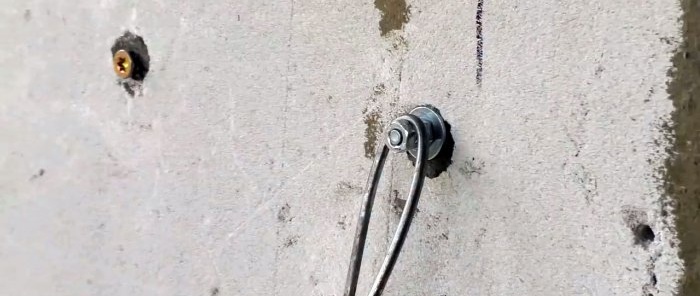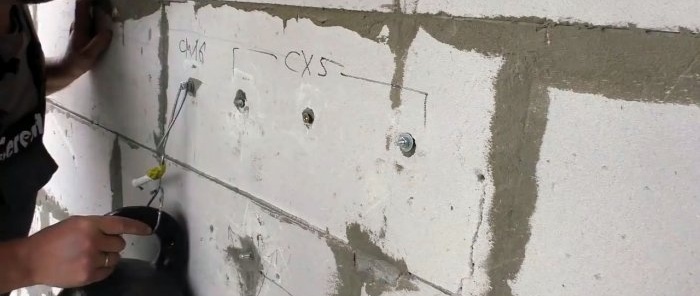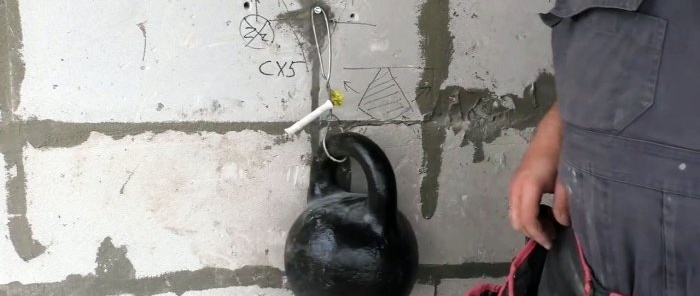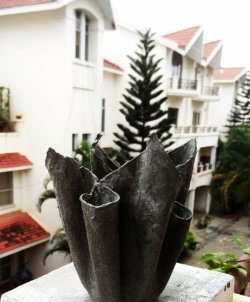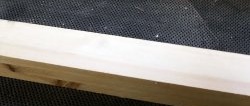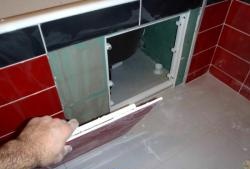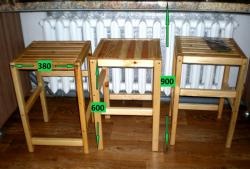Which fasteners to choose for foam aerated concrete. Homemade anchor
Gas and foam blocks are poorly held by fasteners for concrete and brick - dowel-nails, anchors, screws, etc. This is due to the fact that porous materials cannot withstand point loads.
But by drilling conical holes in them and filling them with strong solutions, you can achieve reliable reinforcement of fasteners for concrete and brick in aerated and foam concrete.
For work we will prepare the following materials and products:
In the work you will need: a drill, a hammer, a 32 kg weight, a vacuum cleaner with a straw, a liquid sprayer, a gun for dispensing solutions, etc.
A nail driven into a porous block will support the weight of a small painting. But if a small pulling or variable force is applied to it, it easily loses its fastening strength.
We fasten the corner for the shelf to the wall made of gas or foam blocks with screws.
Untwisted screws “sit” more firmly in porous material than nails. But they also cannot withstand the average variable load.
A 10 mm twist drill does not press through gas or foam concrete at all and can easily withstand the weight of a weight of 32 kg. But it is simply pulled out of the wall with one hand.
Plastic inserts only slightly strengthen fasteners in porous materials.
The screws screwed into them become loose along with the insert due to the weight of the swinging weight of 32 kg. The strength of the dowels is slightly increased by placing them in the wall using liquid nails.
We screw a long concrete anchor into the gas or foam block along the guide hole, hang a 32 kg weight and start swinging. Soon the anchor will become loose and can be easily pulled out by hand.
We drive the sleeve from the sleeve anchor into the guide hole, screw in the pin and screw on the nut. We hang and swing the weight and make sure that this fastener holds in the porous material more firmly than all those tested before.
It is not easy to pull it out even with a tool due to the fact that the expansion of the anchor gradually destroys the material and creates conditions for it to come out.
To prevent loose material from collapsing, a reverse cone is drilled into it and filled with stronger material. To do this, we use a drill with a plate and nut attached to the drill to protect the chuck and the entrance to the wall.
To clean a cone hole in a porous material, we suck out or blow out destruction products from it when drilling with a vacuum cleaner, attaching a straw to the end of the hose.
For better adhesion, coat the holes from the sprayer with primer. Then we fill it with cement mortar from a gun, and one with tile adhesive.
After soaking the solution for a day, drill holes in them and insert fasteners.At the same time, we are trying the option with a “lazy anchor”, which requires less time and money.
Instead of a cone, we drill a simple hole. Using a straw, we blow out the drilling products. Moreover, instead of an anchor we use a bolt.
We treat the hole with a primer and fill it with cement solution. Before it sets, insert the bolt with the head inward and let it dry.
Hardened cement is so strong that the drill cannot take it without chiseling. We screw a dowel-nail into the first hole with CX-5, and concrete anchors into all the others, including the fourth with CM-16.
We test them with the same 32 kg kettlebell. The dowel-nail will not come out of the wall. The anchors are motionless even under dynamic load. The anchor moves a little in the glue, but does not come out. All fasteners also passed the pull-out test under a load of 100 kg (the weight of an adult).
The mini-bolt anchor (lazy anchor) also performed well. Considering that there is almost no need to spend money and time on it, it was chosen as the winner.
source
But by drilling conical holes in them and filling them with strong solutions, you can achieve reliable reinforcement of fasteners for concrete and brick in aerated and foam concrete.
Will need
For work we will prepare the following materials and products:
- mounting cement brand “Ceresit CX-5”;
- nails, screws and dowels;
- long bolt;
- different anchors for concrete;
- primer brand “Ceresit CT-17”;
- tile adhesive brand “Ceresit CM-16”;
- corner for attaching a shelf, etc.
In the work you will need: a drill, a hammer, a 32 kg weight, a vacuum cleaner with a straw, a liquid sprayer, a gun for dispensing solutions, etc.
The process of securing and testing fasteners in porous materials
A nail driven into a porous block will support the weight of a small painting. But if a small pulling or variable force is applied to it, it easily loses its fastening strength.
We fasten the corner for the shelf to the wall made of gas or foam blocks with screws.
Untwisted screws “sit” more firmly in porous material than nails. But they also cannot withstand the average variable load.
A 10 mm twist drill does not press through gas or foam concrete at all and can easily withstand the weight of a weight of 32 kg. But it is simply pulled out of the wall with one hand.
Plastic inserts only slightly strengthen fasteners in porous materials.
The screws screwed into them become loose along with the insert due to the weight of the swinging weight of 32 kg. The strength of the dowels is slightly increased by placing them in the wall using liquid nails.
We screw a long concrete anchor into the gas or foam block along the guide hole, hang a 32 kg weight and start swinging. Soon the anchor will become loose and can be easily pulled out by hand.
We drive the sleeve from the sleeve anchor into the guide hole, screw in the pin and screw on the nut. We hang and swing the weight and make sure that this fastener holds in the porous material more firmly than all those tested before.
It is not easy to pull it out even with a tool due to the fact that the expansion of the anchor gradually destroys the material and creates conditions for it to come out.
To prevent loose material from collapsing, a reverse cone is drilled into it and filled with stronger material. To do this, we use a drill with a plate and nut attached to the drill to protect the chuck and the entrance to the wall.
To clean a cone hole in a porous material, we suck out or blow out destruction products from it when drilling with a vacuum cleaner, attaching a straw to the end of the hose.
For better adhesion, coat the holes from the sprayer with primer. Then we fill it with cement mortar from a gun, and one with tile adhesive.
After soaking the solution for a day, drill holes in them and insert fasteners.At the same time, we are trying the option with a “lazy anchor”, which requires less time and money.
Instead of a cone, we drill a simple hole. Using a straw, we blow out the drilling products. Moreover, instead of an anchor we use a bolt.
We treat the hole with a primer and fill it with cement solution. Before it sets, insert the bolt with the head inward and let it dry.
Hardened cement is so strong that the drill cannot take it without chiseling. We screw a dowel-nail into the first hole with CX-5, and concrete anchors into all the others, including the fourth with CM-16.
We test them with the same 32 kg kettlebell. The dowel-nail will not come out of the wall. The anchors are motionless even under dynamic load. The anchor moves a little in the glue, but does not come out. All fasteners also passed the pull-out test under a load of 100 kg (the weight of an adult).
The mini-bolt anchor (lazy anchor) also performed well. Considering that there is almost no need to spend money and time on it, it was chosen as the winner.
Watch the video
source
Similar master classes
Particularly interesting
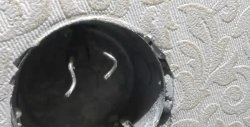
How to install a socket if there are short wires left
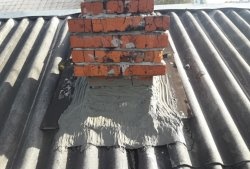
How to eliminate gaps between the chimney and slate
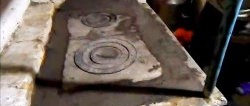
How to mix an ultra-reliable solution for the oven that does not give
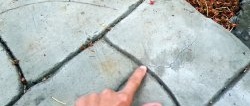
There will be no more cracks: What to add to concrete to make it
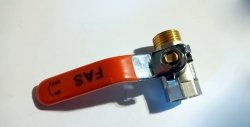
Never buy ball valves without checking with me
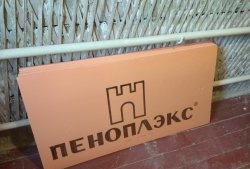
New technology for floor insulation with penoplex
Comments (3)

